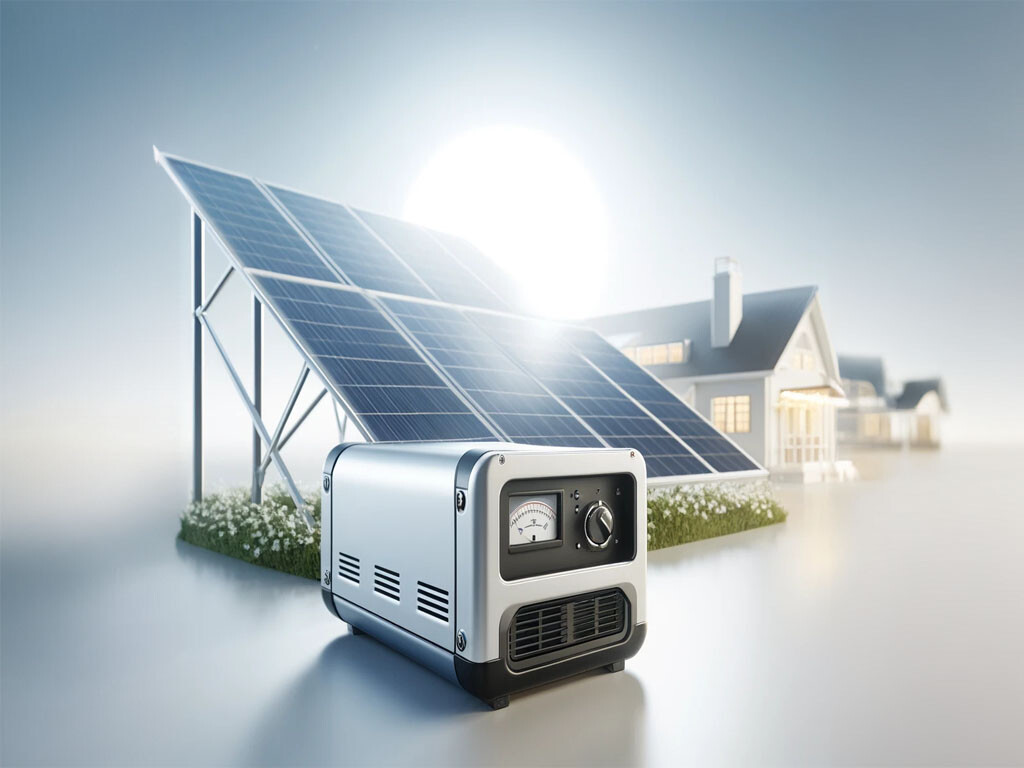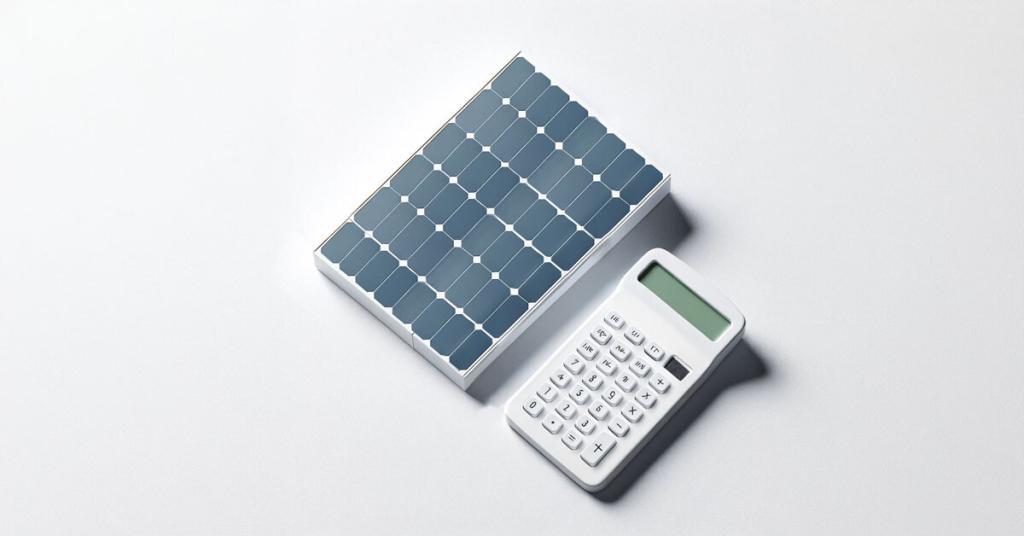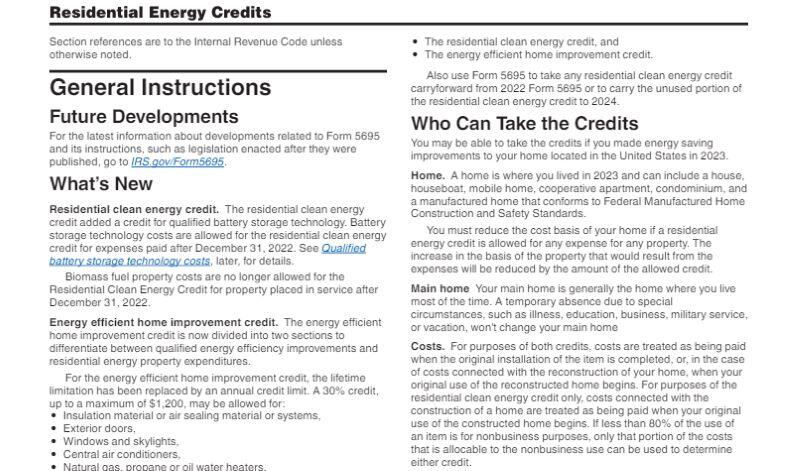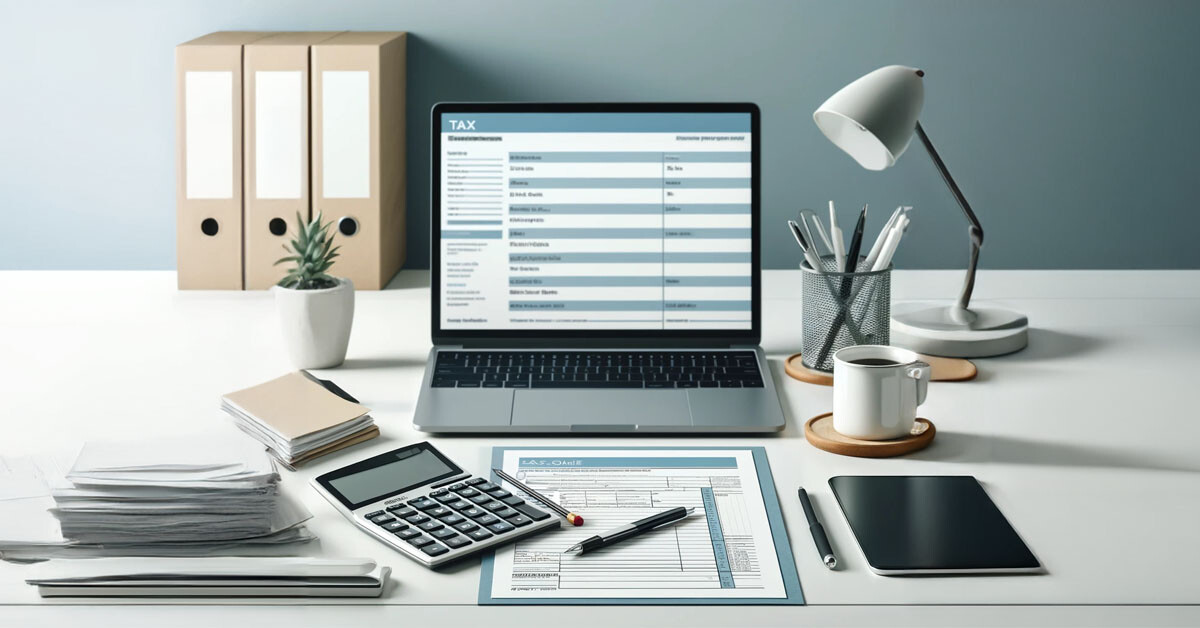Tax incentives aren’t just for large corporations. Many people can take advantage of the 30% solar tax rebate. It applies to solar generators and portable power stations too. But how does the portable solar generator tax credit work?
The details are fairly straightforward. If you buy a qualifying solar system, you get a 30% solar tax credit back. For many people, this means you essentially reduce the cost of your solar generator by 30%.
This article covers everything you need to make sure you get this solar tax incentive.
We carefully select the products and services we link to. If you buy through our links, we may earn a commission. There’s no extra cost to you and it helps us provide this information.
Disclaimer: This information is for educational purposes and is not professional tax advice. We’ll review a lot of the details so you can take steps to get this credit, but specific situations differ and you may need to consult with a tax professional.

How Does Solar Tax Credit Work?
We’ll kick things off with a quick overview of the solar tax credit and how it applies to portable power stations. The Federal Solar Tax Credit works by providing a 30% credit for the cost of installing solar energy systems. The solar tax rebate applies to nearly all aspects of a solar installation, including:
- Solar panels
- Power stations (or batteries and inverters)
- Inverter and installation costs
This means that if you install a $10,000 solar system, you can get $3,000 back. It is a tax credit that goes dollar-for-dollar against your tax liability. Tax credits are one of the best tax breaks – even better than tax deductions.
The portable solar generator tax credit is available to personal homeowners and businesses with new installations of solar systems. It can be your primary or secondary home. Some people may even be able to claim this for their RV or boat. It is not available to renters or for used systems.
If you want to get the tax rebate for solar generators or a battery bank, it must have a battery that’s at least 3kWh (3,000Wh). That’s on the smaller side for home backup, so this is usually not a problem. Many people go with significantly larger systems. For example, the EcoFlow Delta Pro Ultra, one of the best home backup systems, starts at 6kWh and goes up to a whopping 90kWh.
The way you get this solar rebate is by filing IRS Form 5695 with your income tax return.
Let’s dive into the details.
Tip: Looking to figure out your home battery backup? Check out the Best Solar Generators for Home Backup. You may want to use our Solar Panel Wizard to see how many solar panels you can use with your power station.

What’s Covered?
Most of the components involved with a solar system are covered with the solar rebate, but not everything. There is no cap on the amount of the credit. The more you spend, the more you can claim.
A lot of people use it just for solar panels. But it can be used as a tax credit for solar generators. It’s available for any home battery backup system over 3kWh. And the solar rebate includes the components needed to connect solar to your home. This is precisely what solar generators do, so they are included.
The items that are available for the tax credit include:
- Solar panels: Fixed or portable panels
- Power storage: 3kWh solar generator or battery
- Balance-of-system costs: Transfer switches, inverters, wires, and mounting hardware
- Installation: Labor costs plus any permitting and inspection fees
- Sales tax for eligible expenses
You cannot claim the solar generator tax credit for:
- Used or refurbished systems
- Leased/rented systems (financing is acceptable)
This means that you should keep the receipts for all related costs. Every cable used, every trip to Home Depot, and every small fee from your installer or any necessary inspections. Keep these handy so you have them around when it’s time to prepare your income tax return.

Who Is Eligible?
The solar tax credit is for homeowners only. The system must be installed in your primary or secondary residence. If you live in an RV or boat, you may be able to qualify.
It’s also important that you have sufficient tax liability to claim the tax credit for solar generators. This is covered in detail below.
Unfortunately, renters are not able to take advantage of the credit. There are ways for members of condominiums and members of other co-op ownership structures to claim the amount they contribute to a community-owned solar power system.
There are also federal solar tax credits for businesses. It’s not limited to personal home use only. Many organizations can lower their energy bill and receive a substantial tax credit to purchase the solar system that can make that happen.

What Is a Tax Credit?
A tax credit is one of the best ways to lower your tax bill. It goes dollar-for-dollar against the income taxes you owe, also called your tax liability. For many people, it will put 30% of the solar cost back into your pocket.
When you file your tax return, you usually follow these steps:
- Taxable Income: Add together your income and subtract out deductions
- Tax Liability: Calculate the amount of taxes you owe based on your taxable income
- Subtract Credits: Take your tax liability and subtract any tax credits
- Compare Payments: See how your taxes paid during the year compared to the liability after credits; then either (1) get a refund because you paid too much or (2) make a payment to cover your entire tax bill
For example, if your taxable income is $100,000, you might owe about $15,000 in federal taxes. But if you bought a $10,000 solar generator, you’ll get 30% or $3,000 as a tax credit. So now you only owe $12,000 in federal taxes. If you’ve already paid $15,000 in taxes by withholding during the year, you’ll get the $3,000 as a refund. If you’ve only paid $10,000 during the year, you’ll owe $2,000 (it would be $5,000 without the solar tax credit).
Does this mean you need to get a big refund to use the credit? Absolutely not.
The amount you might get a refund when you file your taxes is NOT your tax liability. When you file your taxes, you compare the taxes you’ve paid during the year to the total tax bill. A refund happens when you’ve paid too much during the year. Most people pay taxes as they earn it, automatically withheld from your paycheck. This is based on a rough estimate of what your tax bill will be. It’s often too high, which is why you get a refund.
Putting a giant solar tax credit lowers your tax bill and can increase your refund.
You must have a high enough tax bill to use the solar generator tax credit. If you have low taxable income or high deductions, you might have a low tax liability. The credit will only apply up to your tax liability. Then it will roll forward to the next year.
Also, this is known as a non-refundable tax credit. This doesn’t mean it cannot be part of a refund. It just means your tax bill must be higher than the credit. If it’s not, the excess credit will roll over to the next year. It will not be refunded. Essentially, a non-refundable tax credit is capped at the total amount of taxes you owe.
Note: This is general information for educational purposes. Every situation is different and you should consult with a tax professional to see how it applies to your situation.

Is This the Same as a Tax Deduction?
A tax credit is very different from a tax deduction. Both can help lower your tax bill, but a credit is a much more effective way of doing so. It goes dollar-for-dollar against your tax bill. For many people, this means you can get 30% of the solar generator system costs returned to your bank account.
Deductions are used to reduce your taxable income. This means that they do NOT reduce your tax bill by the amount of the deduction. It’s just by whatever your marginal tax rate is.
For example, if you have $100,000 in income and then apply a $3,000 deduction, your taxable income is then $97,000. This will lower your tax bill by about $600.
But if you have $100,000 in income and then apply a $3,000 tax credit, this will lower your tax bill by $3,000. Big difference!
Using the portable power station federal tax credit can be a huge help in lowering the true cost of the system. It’s not a fancy tax strategy that doesn’t help. As long as your tax liability is more than 30% of your solar cost, you’ll likely get the benefits of the full 30%!

How to Use Solar Generator Tax Credit?
It’s remarkably easy to use the solar generator tax credit. The IRS has a form that is specifically for Residential Energy Credits. You just fill that out and it will easily calculate the 30% for your tax credit.
If you use systems like TurboTax, H&R Block, TaxSlayer, etc., many of them will guide you through the process without a hassle. They just take your solar cost and put it in this form.
You can see IRS Form 5695 for the details. When tax time comes, fill it out following the IRS instructions for this form. The basic idea to fill out this form is:
- List your solar costs
- Calculate what 30% is
- Find your solar tax credit and apply it to your tax liability on your main form (usually 1040 or a variant of that)
As with any tax situation, keeping the associated documents is important. Even if the IRS or your tax prep software doesn’t ask for it, it may be needed down the line. It’s a good idea to store the solar generator receipts.

Wrap Up
The portable solar generator tax credit can put 30% of your power station and solar system costs back into your pocket. As long as your tax liability exceeds this amount, you should be able to take full advantage of it. And if your tax liability is lower, you can roll it forward to the next year.
Ready to get a solar generator to keep your house alive during an outage? You can check out our How to Build a Battery Backup System to learn the secrets or head straight to the Best Solar Generators for Home Backup to get yours today.







